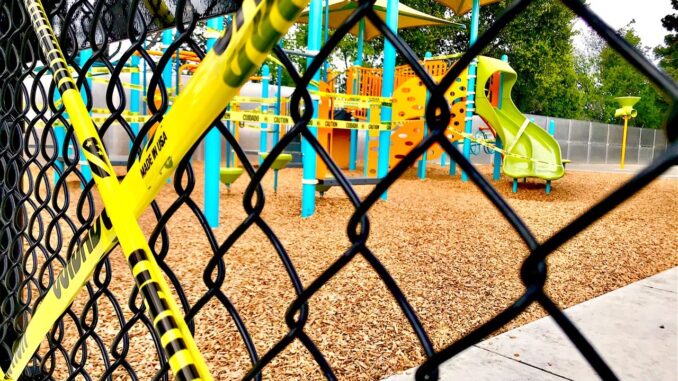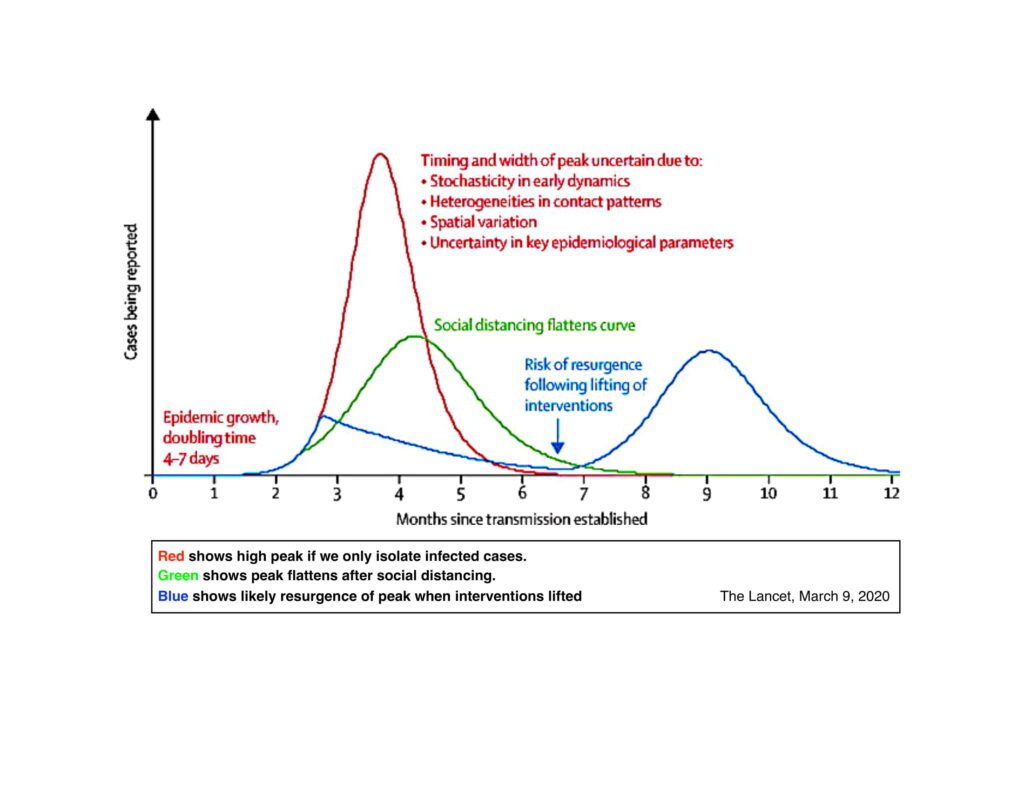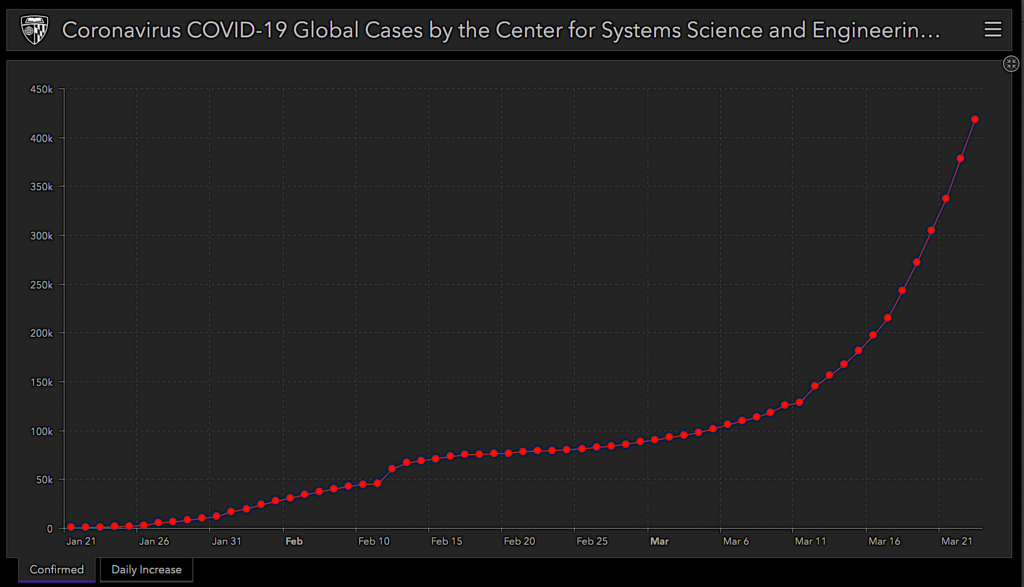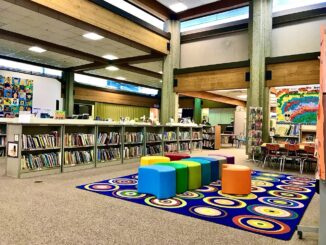
By Ivy Lopez
In past pandemics, schools are typically closed first because children are usual vectors in the transmission of influenza in the household and community.
“School closures have been found to be effective in slowing down influenza transmission, whether implemented as a mitigation strategy or due to other reasons (e.g., regular school breaks, teacher’s strike, etc.).” (Epidemics, 2019*)
Though COVID-19 attacks the sick and elderly first, it now surfaces more in ages 18-64. We can’t predict how it will affect children whose immune systems are still developing.
The “primary benefit of dismissals are to delay the epidemic peak, by 5–6 days per week of dismissal for most pandemic scenarios, until the peak is postponed long enough for vaccines to be introduced and reduce the spread.” (Epidemics, 2019*)
School closures are an effective non-pharmaceutical intervention (NPI) to slow the spread of the virus and flatten the curve. This means we need to lower the number of sick people over a period of time so hospitals can adequately care for them. So instead of 100 people sick in three days, if we isolate and stay home, we can lower the number to 100 sick over six days.
What can six days buy us?
We need time to heal. Let’s say a hospital only has 200 beds and 10 doctors. But 50 patients come in each day. By Day 4 the hospital is at full capacity. By Day 6, it has 300 patients. Even if we reduce patients in half, it’s still 100 over capacity—-and the sick keep coming in every day.
But if we stay out of hospitals by closing schools, staying home, and avoiding crowds, we are less likely to get sick. This frees up vital medical resources and lower the peak demand for healthcare so the most severe cases can be treated properly, and thus reduce deaths.
It takes 14-20 days to recover from COVID-19, so if we can delay the peak demand for hospitals even just by 3 weeks, the critically sick have time to heal.
At best, school closures during a pandemic can reduce the total number of cases by 15-25% and reduce peak attack rates by 40%. School closure combined with keeping all children at home can be sufficient to stop a pandemic. It’s important that kids stay home and avoid outside contact.
School closures should be used with other NPIs like self-isolation, quarantine, business shutdown, work from home, and social distancing. Until a vaccine is found, NPIs are our only defense against this pandemic.
“When coupled with 25% adults teleworking, 8-week school closure would be enough to delay the peak by almost 2 months with an approximately 40% reduction of the case incidence at the peak. This is critical to reduce the burden on the healthcare system in the weeks of highest demand.” (“Expected impact of school closure and telework to mitigate COVID-19 epidemic in France”, Report #8, March 14, 2020)
At the beginning of an epidemic, NPIs like school closures and quarantines should be immediately enforced to curb the spread of the disease.
“As we now know, timing is crucial to stemming the spread of the virus….if China had taken these measures even five days earlier, it is estimated the impact of the virus would have been reduced by two-thirds.” (Yi Huang, et al., Centre for Economic Policy Research, March 2020)
Early detection is key
Deciding whether to close individual schools or those in a particular community depends on the school’s early detection of a positive influenza case.*
Once there is a suspected case, even before a lab test confirms it, schools should immediately close. This initial case can reflect how the community will be affected, so neighboring schools should also proactively close down even before they get a case.
When there is a strong surveillance system (detects 5% of flu cases) school closures of any duration and on any scale reduces cumulative incidence, especially for closures lasting 8 weeks or longer.
But if a school has a low detection rate (1%) and it is not closed immediately after the first suspected case, a school closing may have little effect in curbing the spread of infection and in decreasing deaths.
Regional & country-wide closures
When the pandemic spreads fast like with COVID-19, region-wide school dismissals of over 4 weeks greatly reduce the first stages of the spread of infection more than community-wide closures.
Even without waiting for a positive case in the community, the whole country can proactively close all its schools to curb the pandemic.
Dismissals over broader geographic regions are only advantageous if the closure is sufficiently long to enable vaccination, which often means several months. Vaccines take over 12 months to produce. Schools can space the closure by rescheduling breaks to coincide with holidays or delaying the start of the semester or school year.
Country-wide school dismissals slows the spread of the virus, as shown by the delayed time-to-peak. This delays and reduces the increased demand for healthcare and gives providers time to prepare and restock supplies to deal with the surge of patients.
“For longer (multi-month) dismissals, we find that a greater reduction in cases is achieved by coordinated larger-scale dismissals (county-level or wider), being proactive rather than waiting until cases are detected in each individual community.” (Epidemics, 2019*)
When the pandemic strain is severe, country-wide school closures will only be effective if it’s longer than 16 weeks.

The curve returns when interventions are relaxed.
https://www.thelancet.com/journals/lancet/article/PIIS0140-6736(20)30567-5/fulltext
Don’t reopen too soon
There is a great risk in reopening schools too soon before the pandemic reaches its peak. It’s better to remain vigilant in identifying positive cases and proactively keeping schools closed until there is evidence that the pandemic shows a stable decline.
“The decision to reopen schools might be equally challenging. An important limitation of social distancing measures is that their effect stops as soon as the intervention is relaxed.” (The Lancet Infectious Diseases)
The COVID-19 outbreak began in December 2019. Four months later, it has become a pandemic that is still rising to its peak. (See Johns Hopkins graph)

COVID-19 cases have not yet reached its peak
https://coronavirus.jhu.edu/map.html
Past epidemics show that when NPIs are relaxed too soon, the epidemic curve will start to peak again which will negate our previous efforts to flatten the epidemologic curve. (See Lancet table, 2020)
Short school closures of two weeks or less can increase “the overall attack rate by returning susceptible students back into schools in the middle of the epidemic.” (J Public Health Manag Pract, 2010)
A flu pandemic study in Canada found “a dramatic increase in transmission among school-age children after schools opened.”
The best scenario is to delay reopening schools until a vaccine is found. But it is estimated that a COVID-19 vaccine will take at least 18 months to develop, produce, and distribute.
In Silicon Valley, schools initially closed for seven weeks from March 16 to May 1. This buys hospitals and drug makers 42 days to test and treat COVID-19 patients. On April Fool’s Day, officials announced that schools will remain closed for the rest of the school year.
In the meantime, schools and teachers shifted online with daily or weekly assignments for students. There are free e-resources for English, math, science, social studies, PE, and extracurriculars like typing, cooking, and art. Schools provide daily meal pick ups, wi-fi hotspots, and computers to students in need. Libraries, museums, and zoos gave students virtual access.
“It is therefore hoped that closure of schools during the pandemic might break the chains of transmission, with the following potential benefits: reducing the total number of cases; slowing the epidemic to give more time for vaccine production; and reducing the incidence of cases at the peak of the epidemic, limiting both the stress on health-care systems and peak absenteeism in the general population, and thus increasing community-wide resilience.” (The Lancet Infectious Diseases**)
**“Closure of schools during an influenza pandemic” by Dr Simon Cauchemez PhD, et al. 2009.
https://www.sciencedirect.com/science/article/pii/S1473309909701768
*”School dismissal as a pandemic influenza response: When, where and for how long?” By Timothy C. Germann, et al., Epidemics, June 2019.
(https://www.sciencedirect.com/science/article/pii/S1755436518301749)
— @IvyDigest on FB & Instagram
Tags: COVID-19, pandemic, school closure, flatten the curve, quarantine

